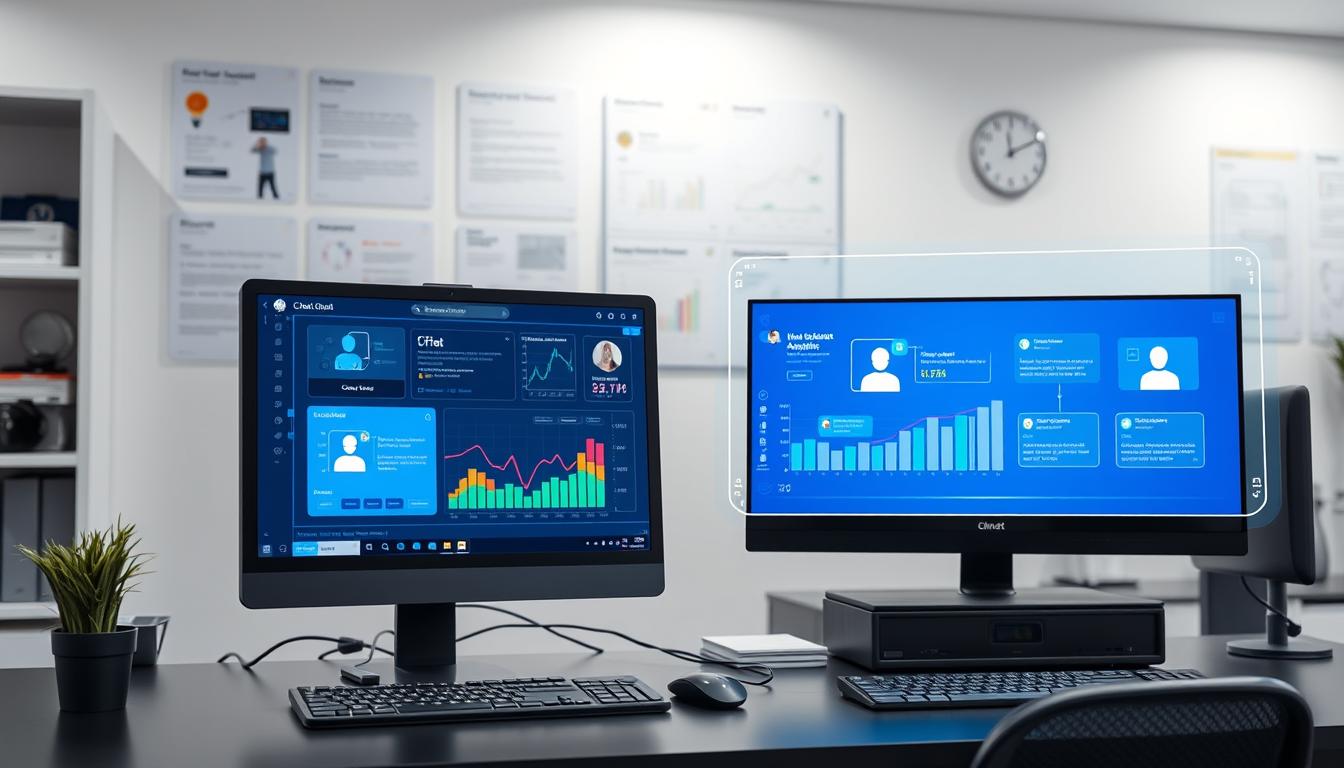Ever found yourself overwhelmed, responding to endless queries with your phone going off nonstop? 😅 In the e-commerce realm, we’re always stretched thin, craving a breather. Automating responses to common questions isn’t just a relief. It entirely changes our interaction with customers, ensuring they’re immediately happy and engaged. By adopting this method, we streamline communication, guaranteeing 24/7 accurate replies while we expand our ventures. Sounds like a dream, doesn’t it? Well, it’s time to make it your reality with a automated response system! ✨
Let’s explore response automation software and its capacity to elevate your business and customer satisfaction. This piece offers insight into handling everyday inquiries and complex support with ease. Get ready—it’s time to revolutionize your customer communications!
Understanding the Need for Automation
In today’s world, customers want quick and precise responses. Businesses strive to meet these expectations. Automating responses is key to managing this demand. This strategy boosts efficiency and customer satisfaction.
Benefits of Automating Frequent Responses
Automation offers significant advantages:
- Instant Answers: Quick solutions to common questions enhance support.
- Efficiency Gains: Saves personnel for complex issues, increasing focus.
- Improved User Experience: Easy info access boosts loyalty and business.
Studies show companies that adopt automation improve profits and cut response times by half, boosting customer loyalty.
Common Scenarios for Automation
Automation shines in several scenarios:
- Response to FAQs: Rapidly solve frequent product queries.
- Order Tracking: Quickly update on purchase status.
- Troubleshooting Assistance: Provide initial help during peak times.
Automation excels in these areas, especially for 24/7 service or when staff is limited. It helps businesses meet customer expectations and builds trust with consistent service.
Choosing the Right Tools for Automation
Selecting top-notch automation tools is key to an effective response management strategy. Brands often look into popular software for solutions. Platforms like Zendesk, Drift, and CoCo for WhatsApp marketing are considered due to their ease of automation. 🎉
Popular Automation Software Options
Researching widely-used platforms is a vital step. Here’s a look at some prominent ones:
- Zendesk
- Drift
- CoCo for WhatsApp marketing
Key Features to Look for in Automation Tools
When scouting for response management tools, valuable features matter. Focus on finding tools with:
- Natural Language Processing: This ensures effective understanding of customer inquiries.
- User-Friendly Interface: It makes both setup and everyday operations simpler.
- Integration Capabilities: These allow smooth connection with your current systems.
Pricing Considerations
Considering the cost is crucial when choosing the right tools. Look for options that provide:
- Competitive pricing that aligns with your budget
- Scalability to support your business’s growth
- Reliable customer support for continuous help
Setting Up Your Automated Response System
Setting up an automated response system can transform your business for the better. It involves steps to ensure your system responds quickly and effectively.
Steps to Configure Automation Tools
To start with your automated response system, you need to plan carefully. Here are essential steps to take:
- Select your software: Pick tools like Outlook or Gmail that suit your business needs.
- Define your FAQs: Pinpoint the most common questions to set up relevant auto-replies.
- Program your responses: Summarize the information into brief, understandable replies.
- Test your setup: Ensure your programmed replies make sense and are comprehensive.
Best Practices for Crafting Responses
To make your automated system work effectively, crafting the right responses is key. Stick to these best practices:
- Ensure messages are concise and straightforward.
- Adopt a tone that’s both friendly and professional to connect with recipients.
- Add relevant business information like contact details or updates on products.
- Always switch off auto-responses upon returning to the office to prevent confusion.
Creating Effective Automated Responses
Automation can significantly enhance communication with customers. It focuses on personalized customer experience. Crafting effective automated responses demands attention to critical elements. These elements ensure your messages resonate well with your audience.
Personalization Techniques
Leveraging personalization techniques is a great starting point. Using customer names and referencing past interactions can make responses feel less robotic. Techniques might include:
- Incorporating the customer’s name in greetings.
- Referencing their previous purchases or inquiries.
- Offering tailored recommendations based on their preferences.
Behavior-based triggers, like opening emails or abandoning shopping carts, can prompt more personalized follow-ups. This boosts the automatic response generator‘s effectiveness. It creates a richer, more engaging experience.
Maintaining Tone and Consistency
Keeping a consistent tone is vital. Your automated responses should mirror your brand’s voice while ensuring clarity. Here are a few tips:
- Use friendly and approachable language.
- Avoid spammy phrases that could annoy recipients.
- Ensure responses align with your brand’s messaging.
This consistency fosters trust. It also reinforces your brand image. Always update your contact details, particularly business hours, to set customer expectations.
Examples of Good Automated Responses
Some notable examples include:
- Welcome emails that thank users for their subscription.
- Acknowledging inquiries with message confirmation and estimated turnaround times.
- Out-of-Office (OOO) messages that provide clear return dates and alternative contacts.
- Follow-up emails to re-engage customers after absences.
- FAQs addressing common questions effectively.
- Reminder emails for upcoming events or deadlines.
- Confirmation receipts ensuring customers their transactions are successful.
Each serves to enhance customer interaction. Using an automatic response generator with real-time updates assures customers. Their inquiries are both acknowledged and promptly attended to. To amplify your automation strategy, explore effective tools that drive engagement across all channels!
Integrating Automation with Customer Support
Automation is transforming customer support, increasing efficiency and smoothing experiences for teams and clients alike. It’s key to find a balance between machine responses and human touch to keep service quality high. Bots can’t handle every inquiry, making personal attention critical for intricate issues. Data’s role, significantly boosting automation by tailoring replies to fit customer profiles, cannot be overstated.
Balancing Automated Responses and Human Interaction
Automation boosts efficiency, yet knowing when to involve human agents is crucial. To integrate effectively, consider these recommendations:
- Evaluate Common Queries: Determine which questions automation can resolve and which require human intervention.
- Implement Tiered Support: Start with chatbots, then escalate complex issues to human agents.
- Monitor Customer Feedback: Continuously improve your strategy by analyzing customer responses.
Using Data to Improve Automation
Intelligent use of data can revolutionize automated support, ensuring messages hit the mark with consumers. Below are strategies for using data effectively:
- Historical Analysis: Apply insights from past interactions to enhance automated responses, considering customer tendencies.
- Regular Feedback Collection: Update automation tactics based on real-time customer sentiment.
- KPIs Tracking: Monitor critical metrics to assess and refine your automation’s impact.
Automation in support doesn’t just cut costs, potentially by as much as 40%; it boosts customer self-reliance too. It enables customers to handle simple issues on their own. Agents then concentrate on more complex concerns. This strategy heightens customer satisfaction, fostering better experiences and deepening loyalty.
Monitoring and Analyzing Response Effectiveness
Effective monitoring and analysis of automated responses are vital for boosting your customer service. Businesses should engage in monitoring response effectiveness for essential insights. This leads to the optimization of automated systems. It’s crucial to identify and track key performance indicators to meet and exceed user expectations efficiently.
Key Performance Indicators to Track
For in-depth analysis of automated responses, focus on these essential metrics:
- Response time
- Customer satisfaction scores
- Resolution rates
- Engagement levels
- Rate of repeat inquiries
Research highlights the importance of proactive monitoring. It not only reduces system downtime but also enhances the user experience. Businesses that implement proactive monitoring, especially in cloud applications, witness a notable improvement in system reliability.
Tools for Analyzing Automated Responses
To improve analysis of automated responses, selecting the right tools is crucial. Notable options include:
- Performance monitoring software
- Customer feedback systems
- Analytics dashboards
- AI-driven monitoring tools
Statistics reveal that organizations leveraging proactive monitoring gain from immediate anomaly detection and a deeper understanding of metrics. This includes CPU usage and response times. Such insights are imperative for maintaining operational stability and ensuring scalable improvements.

Troubleshooting Common Automation Issues
Automation can greatly enhance efficiency, yet it’s not exempt from challenges. Recognizing common hurdles is essential. We delve into these issues, pinpointing frequent problems and offering solutions for technical hiccups in response automation.
Identifying Frequent Problems
When troubleshooting automation, challenges might include:
- Miscommunication with customers due to unclear automated responses.
- Slow response times that frustrate users, causing decreased satisfaction.
- Low engagement from users who feel detached from automated interactions.
- Compatibility issues with legacy systems, which may obstruct integration.
- Data silos that complicate information flow across different departments.
Solutions for Technical Glitches
To address technical glitches in response automation, adopt a proactive strategy:
- Conduct routine system checks to ensure smooth operations.
- Create a rapid-response team to efficiently handle customer escalations.
- Promote clear communication and teamwork to reduce confusion.
- Train staff on the automation tools to boost their understanding and efficiency.
- Set realistic expectations for automation, recognizing its limits while striving for continuous improvement.
Future Trends in Automated Response Systems
The automated response system landscape is quickly changing, thanks to AI advances in customer support. As automation becomes a critical part of communication, businesses should adapt to these technologies. AI advancements mean chatbots are becoming more sophisticated, capable of understanding context and responding intelligently.
AI Innovations in Customer Communication
A significant 90% of contact center leaders intend to invest in self-service capabilities soon. This move is aimed at improving virtual agent interactions for smarter customer support. By 2025, it’s projected that 80% of customer service entities will use generative AI. This will boost agent productivity and enhance customer experiences, making service operations more proficient and reducing the need for live-agent interactions.
The Role of Chatbots in Automation
Chatbots are leading these advancements, showing immense potential when paired with predictive analytics. They efficiently direct inquiries to appropriate agents, ensuring better interactions. Furthermore, automating routine inquiries allows agents to focus on complex problems. Over half of contact centers now incorporate AI to offer personalized, context-aware services, aiming for seamless customer interactions without frustration.
With these advancements, maintaining strong security measures for data protection and regulation compliance remains vital. The future of automated responses will likely involve combining technology with a human touch. This blending aims to create resonating customer experiences that help businesses grow. Learn more about automation strategies in this guide on creating automation.
Ensuring Compliance and Privacy
In the digital era, compliance in automation is essential. The surge of data protection laws like GDPR and CCPA requires businesses to focus on privacy. They must develop strong systems to align with these regulations. Failure to comply can result in serious consequences for your organization.
Data Protection Regulations to Consider
Various regulations dictate how data is managed:
- General Data Protection Regulation (GDPR): Influences any entity processing EU citizens’ personal data.
- California Consumer Privacy Act (CCPA): Affects firms that handle personal info of California residents.
- Health Insurance Portability and Accountability Act (HIPAA): Controls the management of health information in the US.
These laws have specific personal data definitions and breach notification duties. Navigating this complex field is imperative for compliance.
Best Practices for Collecting User Data
Embracing best practices in user data collection fosters trust and compliance:
- Initiate clear user consent processes to explain data collection practices.
- Adopt secure methods for safeguarding sensitive data.
- Consistently train employees on privacy measures.
Furthermore, integrating privacy automation aids in compliance efforts, like data tracking and consent handling. Such automated tools boost efficiency and minimize errors. This allows for quick adjustments to evolving data protection laws.

Case Studies: Successful Automation Implementation
Diving into successful automation implementation uncovers how industries overcome challenges. By examining real-world cases, we find valuable insights. Various successful automation examples show how to boost efficiency and satisfaction.
Examples from Various Industries
Let’s examine some standout examples:
- E-commerce Giant: Achieved a 70% reduction in regression testing time and a 30% decrease in critical bugs. This example shows automation’s power to streamline processes and enhance product reliability.
- FinTech Startup: Reduced integration issues by 90% and reached 99.99% uptime. This case highlights automation’s role in providing consistent service and responding swiftly to market demands.
- Healthcare Provider: Maintained a 100% pass rate in HIPAA audits. This demonstrates how automation strengthens compliance and efficiency in regulated industries.
Lessons Learned from Implementation
Each successful implementation teaches us valuable lessons about automation. Here are the key takeaways:
- Continuous Feedback: Constant evaluation is essential for refining automated systems.
- Task Suitability: It’s important to select tasks that benefit most from automation. Starting with smaller tasks can enhance your automation capabilities.
- Flexibility: Being able to adjust automation strategies based on feedback and evolving business needs is key to maintaining their effectiveness.
Automation revolutionizes industries, providing numerous advantages. Those aiming to leverage it can learn much from the successful automation examples shared here.
Training Your Team on Automated Systems
Preparing your team for automated systems involves more than tech. It’s about engaging and empowering each individual. Training on automation boosts productivity and equips everyone with crucial skills. This ensures success in an automated landscape.
Importance of Team Buy-in
It’s vital to secure team buy-in for automation. When employees are part of the process, their enthusiasm for change increases. Here are key benefits of engaging employees with automation:
- Increased Adaptability: Employees adapt quicker to new processes.
- Boosted Morale: Inclusion enhances job satisfaction and motivation.
- Enhanced Collaboration: Team members support each other during the transition.
Ongoing Support and Training Resources
Ongoing support maintains a skilled workforce. Utilizing various resources supports continuous learning:
- Workshops: Hands-on sessions for practicing automation tools.
- Online Courses: LMS platforms provide flexible, anytime training.
- Documentation: Centralized resources for consistent information access.
Investing in automation reduces training costs and administrative work significantly. A robust Training Management System reduces manual tasks by up to 80%. These opportunities ensure your team stays trained, engaged, and future-ready!
Customer Feedback and Continuous Improvement
In today’s fast-paced digital landscape, understanding customer feedback on automation is vital for businesses aiming high. By collecting feedback, companies glean insights that fuel continuous improvement cycles. This strategy ensures automated systems align with customer expectations and evolve, enhancing the user experience.
Gathering Feedback on Automated Responses
Diverse methods are used for effective feedback collection to understand customer sentiments. Here are some popular techniques:
- Surveys: Use customer satisfaction surveys with clear, concise questions to gauge satisfaction levels effectively.
- Customer Reviews: Monitor reviews on platforms like Google and Yelp to get unfiltered opinions on automated responses.
- Focus Groups: Engage small groups of customers for in-depth discussions to uncover their experiences.
- Social Media Engagement: Track brand mentions and sentiments in real time while promoting surveys through social platforms.
Iterating Based on User Experience
After collecting feedback, the refinement process begins. Key practices include:
- Quantitative Analysis: Identify frequent issues and prioritize improvements based on the collected data.
- Qualitative Insights: Use open-ended responses to dive deep into customer feelings and suggestions.
- Product Feedback Surveys: Gather insights specifically about features and usability to inform product enhancements.
- Regular Updates: Ensure automated responses improve with consistent customer feedback.
By dedicating themselves to feedback collection and analysis, brands can see notable continuous improvements. This dedication boosts customer satisfaction and fosters loyalty. It creates a robust cycle of innovation and improvement.
Conclusion: The Future of Customer Communication
Looking towards the future, adaptability and innovation are key for thriving in customer communication. Embracing advancements in technology, particularly automation, is essential. With 81% of organizations viewing customer experience as a critical differentiator, leveraging automation’s benefits is vital. This approach can significantly improve our engagement with customers.
Embracing Change and Innovation
The shift towards omni-channel experiences has been dramatic, growing from 20% to over 80%. This highlights the necessity of incorporating automation for seamless customer interactions. A well-crafted automated system not only enhances efficiency but also meets the needs of 67% of consumers who prefer self-service options. By adopting tools like CoCo for platforms such as Shopify, businesses can simplify communication. This fosters positive customer experiences that lead to recommendations and sharing among satisfied customers.
Final Thoughts on Automation Benefits
The impact of automation on customer satisfaction and loyalty is undeniable. Providing tailored interactions has been shown to encourage impulse buying and a willingness to pay more. Investing in automation technology not only makes operations more efficient but also meets the expectations of modern consumers. For those interested in how to effectively implement automation, this resource offers valuable insights into achieving a harmonious balance.




